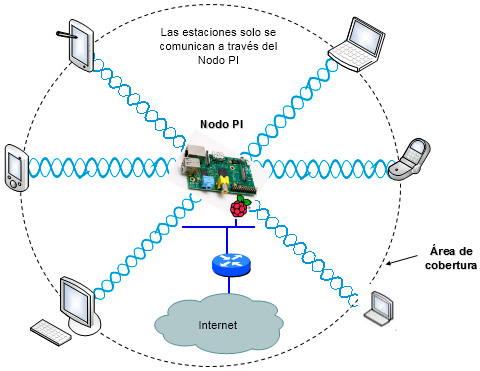Free software to implement private cloud storage solutions
DOI:
https://doi.org/10.17981/ingecuc.14.2.2018.07Keywords:
Prototype, architecture, server, networks, innovation, open sourceAbstract
Introduction: In this article proposes the creation of a prototype of storage of data on Cloud Computing using free software tools, for small and medium enterprises (SMEs), which will contribute in improving the storage capacity of information, incorporating to the process a Cloud Storage tool, which allows to create, save and update the data in a synchronized way from any geographic location, reducing the risks of maintaining several versions of a document and losing temporary or definitive information. In this way, it is proposed to show that free open source tools are low cost and collaborative for small businesses.
Objective: Evaluate the relevance, feasibility, and impact of Cloud Storage tools on free software in order to implement a data storage prototype to be used by small and medium enterprises, establishing organizational and decision-making schemes according to their objectives business.
Methodology: It is based on a spiral method by stages. In the first stage, the model of comparison of free software products Qualification and Selection of Opensource Software (QSOS) applied to identify the best Cloud Storage tool. The second stage, the design, and implementation of the prototype was carried out for storage over Cloud Computing. The last stage, tests, and adjustments were made in the validation of said prototype for its start-up.
Results: Structure of a finished functional prototype for the storage of data on Cloud Computing through the use of free software tools, aimed at small and medium enterprises, evidencing its easy handling, control and decision making in the management of their data and deployment in the organization becoming a tool that benefits this type of productive sector.
Conclusions: The construction of data storage systems on Cloud Computing, based or guided on the achieved prototype, constitutes a low cost tool in its implementation and maintenance, which contributes to the sustainability of the solution together with the possibility of scaling new functions and / or modules, by small and medium-sized companies, that do not have financial resources for investment in information technology and connectivity and storage services.
Downloads
References
I. Foster, Y. Zhao, I. Raicu and S. Lu, "Cloud Computing and Grid Computing 360-Degree Compared" in 2008 Grid Computing Environments Workshop, Austin, TX, USA. 2008, pp. 1-10. https://doi.org/10.1109/GCE.2008.4738445
Q. Zhang, L. Cheng and R. Boutab, "Cloud computing: state-of-the-art and research challenges", Journal of Internet Services and Applications, vol. 1, no. 1, pp. 7-18, april. 2010. https://doi.org/10.1007/s13174-010-0007-6
F. B. Shaikh and S. Haider, "Security threats in cloud computing", in 2011 International Conference for Internet Technology and Secured Transactions, Abu Dhabi, United Arab Emirates, 2011, pp. 214-219.
International Data Corporation (IDC), (2016, jan.) "Worldwide Semiannual Public Cloud Services". [Online]. Available: https://www.idc.com/getdoc.jsp?containerId=prUS40960516
T . Barnett, A. Sumits, S. Jain, U. Andra and T. Khurana, "Cisco Global Cloud Index: Forecast and Methodology, 2015–2020", Cisco Public, 2016. [Online]. Available: https://www.cisco.com/c/dam/m/en_us/service-provider/ciscoknowledgenetwork/files/622_11_15-16-Cisco_GCI_CKN_2015-2020_AME R_EME AR_NOV2016.pdf
A. Cabarcas, M. Puello y R. Rodriguez, "Conceptualización de la Cloud Computing en el entorno Colombiano". Revista Virtual Ingeniator, vol. 2, no. 3, pp. 22-39, 2011.
K.-J. Stol and M. Babar, "A Comparison Framework for Open Source Software Evaluation Methods", in Open Source Software: New Horizons. OSS 2010. IFIP Advances in Information and Communication Technology, Notre Dame, USA. Springer, 2010, pp. 389-394. https://doi.org/10.1007/978-3-642-13244-5_36
A. Rajan and S. Shanmugapriyaa,"Evolution of Cloud Storage as Cloud Computing Infrastructure Service", IOSR Journal of Computer Engineering (IOSRJCE), vol. 1, no. 1, pp. 38-45, may. 2012. https://doi.org/10.9790/0661-0113845
B , Zeiss, D. Vega, I. Schieferdecker, H. Neukirchen and J. Grabowski, "Applying the ISO 9126 quality model to test specifications", Software Engineering, vol. 15, n. 6, pp. 231- 242. Jan. 2007.
F. Duijnhouwer and C. Widdows, "Open Source Maturity Model", Capgemini Expert Letter, 2003.
N ASA Earth Science Data Systems Software Reuse Working Group (2010, April 30). Reuse Readiness Levels (RRLs), Version 1.0. [Online]. Available: https://cdn.earthdata.nasa.gov/conduit/upload/2004/RRLs_v1.0.pdf
Spike Source, CarnegieMellonWest, Intel. (2005, November 24). Business Readiness Rating for Open Source. [Online]. Available: https://www.immagic.com/eLibrary/ARCHIVES/GENE RAL/CMU _US/C050728W.pdf
. QSOS (2013, jan. 19). Qualification and Selection of Opensource Software. [Online]. Available: http://dist.qsos.org/qsos-2.0_en.pdf

Downloads
Published
How to Cite
Issue
Section
License
Published papers are the exclusive responsibility of their authors and do not necessary reflect the opinions of the editorial committee.
INGE CUC Journal respects the moral rights of its authors, whom must cede the editorial committee the patrimonial rights of the published material. In turn, the authors inform that the current work is unpublished and has not been previously published.
All articles are licensed under a Creative Commons Attribution-NonCommercial-NoDerivatives 4.0 International License.


 English
English
 Español (España)
Español (España)






















